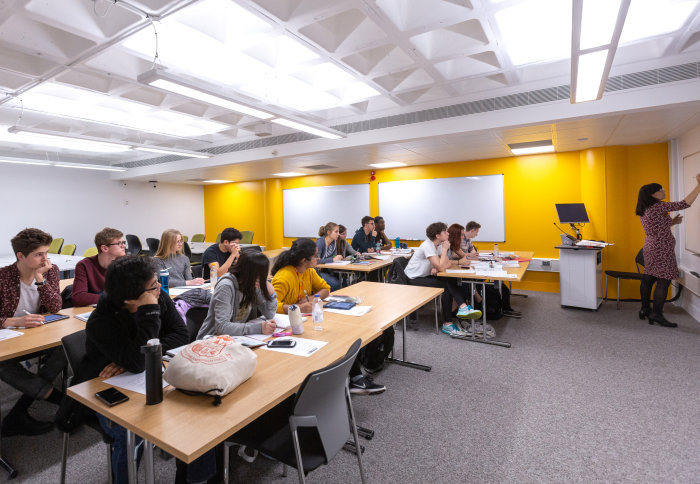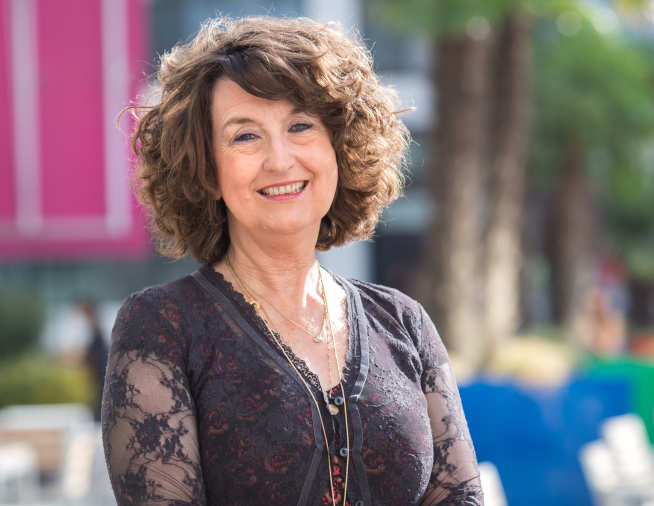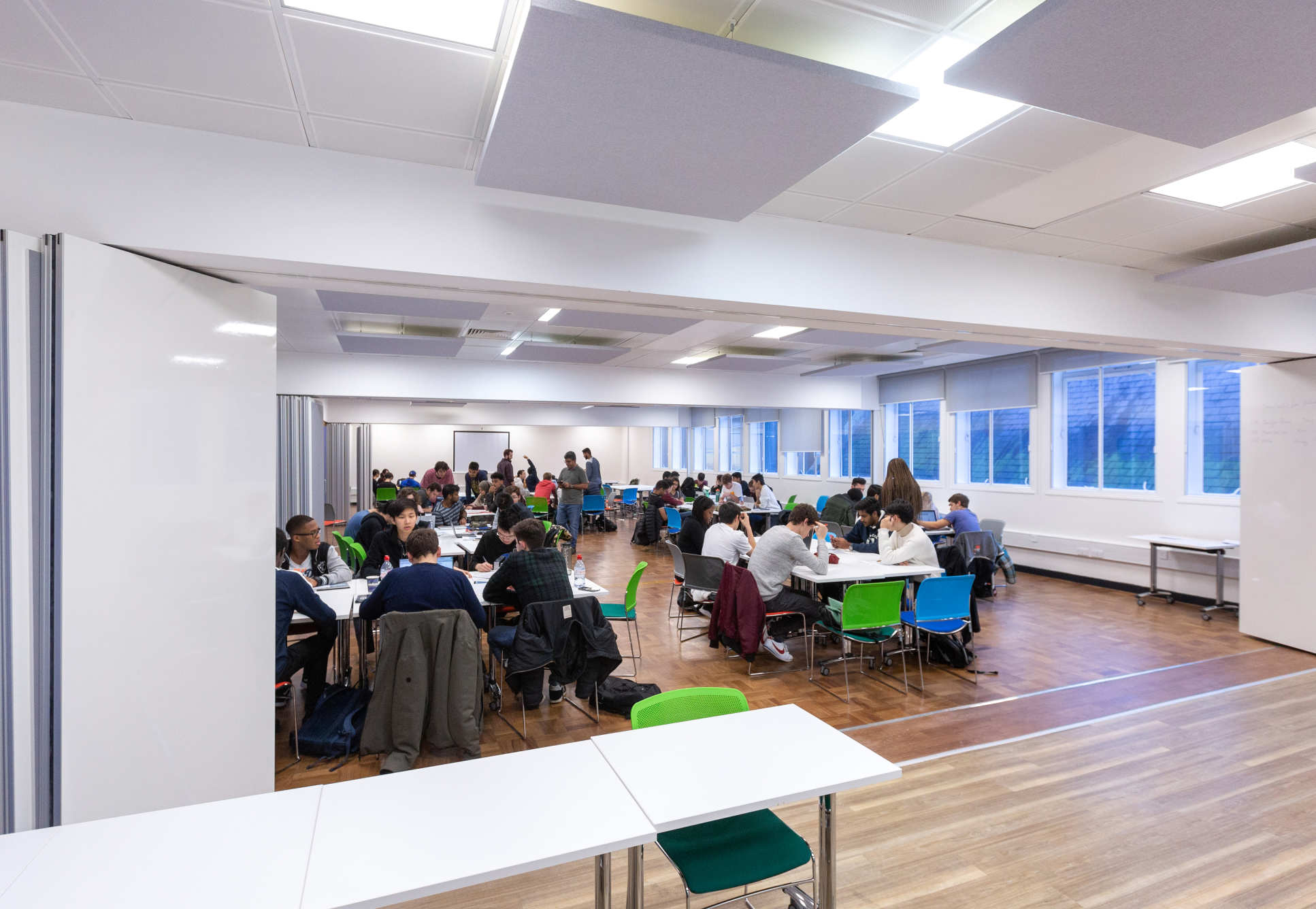Redesigned classrooms support Imperial's teaching transformation

Students studying in brighter, airier, and more flexible classroom space
Teachers and students praise the College's significant investment in 61 refurbished classrooms which will come into use for the 2018/19 academic year.
The ambitious project, first announced in August, provides dozens of newly renovated teaching spaces for use by Imperial students across a variety of campuses and courses. The rooms will gradually come into use across the academic year.

Professor Simone Buitendijk, Vice Provost for Education, said: "These spaces will be transformational to the student experience at Imperial. My special thanks goes to Craig Walker and Nick Roalfe, who have led their teams to a challenging schedule. More pleasant and more practical learning spaces is key to improving learning outcomes for our students."
Talking teaching
Flexible and comfortable teaching spaces are crucial to the teachers that use them every day. Dr Elizabeth Hauke, Principal Teaching Fellow, recently detailed the challenges of using classrooms that aren't well-suited for certain types of course content.
Dr Mark Pope, Senior Teaching Fellow, said: “Teaching in a modern, flexible room means I am able to offer my students more varied learning opportunities. Thanks to the latest AV technology and modular furniture it is easier to structure classes around course content and learning outcomes, rather than be limited by the number of students or the room layout.”
The environment in which teaching is delivered is increasingly treated with the same level of consideration as course content.

Martyn Kingsbury, Professor of Education, said: “Imperial's Centre for Higher Education Research and Scholarship (CHERS) researches undergraduate student perception of, and engagement with potential educational spaces. We are particularly interested in how students use informal, non-timetabled spaces.
"Given the College's Learning and Teaching Strategy calls for more inclusive teaching and more active learning these enhanced spaces are crucial as they offer opportunities for more student-led, collaborative and engaging learning activity.”
Listening to students
Throughout the renovation the College has sought the opinions of student representatives. In discussion with the College and the architect practice PendwardenHale, the Union’s Academic Representation Network helped identify spaces most in need of improvement.
Deputy-President (Education) of the Imperial College Union, Alejandro Luy, said: "This work not only shows the College’s commitment to providing students with high-quality work spaces that enable them to excel, but by working with the Union’s Representation Networks to identify the spaces in most need of refurbishment, demonstrates a commitment to working with students as partners even on large scale projects.
"The Union is excited to see how these spaces are utilised by staff and students to facilitate a world class educational experience, and looks forward to continue working closely with the College.”

Designing for a changing world
Murray MacKay sat down with Nick Roalfe, Director of Estates Operations, to discuss the opportunities and challenges of transforming a large number of teaching spaces that are in constant use by staff and students.
A range of improvements have been delivered in this refurbishment. Could you highlight some of the most important?
Across 61 rooms we’ve prioritised issues like light refurbishment, teaching equipment and furniture. Highlights include 650+ new chairs, 310+ flexible folding tables, and enough writable walls and whiteboards to completely cover the Queens Tower Lawn. We’ve also – with the help of Departments – transformed 21 rooms across ACE Extension, Blackett, Charing Cross Glenister, Charing Cross Reynolds, Chemistry, Huxley, Sir Ernest Chain, and Sherfield. These rooms are now modern, flexible, and places where the room enables interactive learning by students and where teachers want to teach.
Was it a challenge to transform so many teaching spaces over the short summer break?
In short, yes! This project did not exist in May, and it is through extraordinary efforts of people working collaboratively with students, academics and departments that we’ve been able deliver. From a standing start with the challenge to address as many of the worst teaching rooms as we could, we had to move very fast, and be very flexible. Support and engagement from Departments from the earliest point gave us confidence to proceed with many of the worst rooms this summer. We’ve also, with swift decision making from affected departments, been able to address once and for all some long term issues like ventilation by working on some rooms in the autumn term. This is a great start, has at times felt very challenging, and with patience and goodwill we have achieved a lot – however there is clearly a lot more to do.
Are there any more improvements on the way?
This summer has been the start of what will be a multiyear programme, with the majority of the improvements delivered over the next 2-3 summers. We are looking very hard at the lessons from this summer and also have the advantage of more time to prepare. One important step we are taking is to reconvene the student representatives and teachers that were involved the rooms this summer to evaluate the improvements delivered to date, identify any further improvements and also to inform plans going forward. We anticipate an additional 30-50 rooms will be addressed next summer; and we are also looking at how to make our lecture theatres more suitable for interactive learning and teaching.
Some teaching spaces have been completely transformed. Have you had good feedback from staff and students?
We have not, yet, had a formal evaluation of the works completed this summer however the initial reaction is very positive. Informal discussions with students indicate that the modern, light, comfortable seats are very welcome as are the writable walls and very large whiteboards in many rooms. Similarly, the teachers that have so far used the rooms have indicated that the new flexibility in many rooms will enable more innovative and interactive teaching, in particular from lightweight foldable desks on wheels. One quote in particular epitomises the reaction so far: “…saw the Glenister seminar rooms today – they look incredible…I actually felt a bit emotional that these horrible, neglected rooms have finally had a bit of TLC. They feel fit to house students in the 21st century.”
Article text (excluding photos or graphics) © Imperial College London.
Photos and graphics subject to third party copyright used with permission or © Imperial College London.
Reporter
Murray MacKay
Communications Division